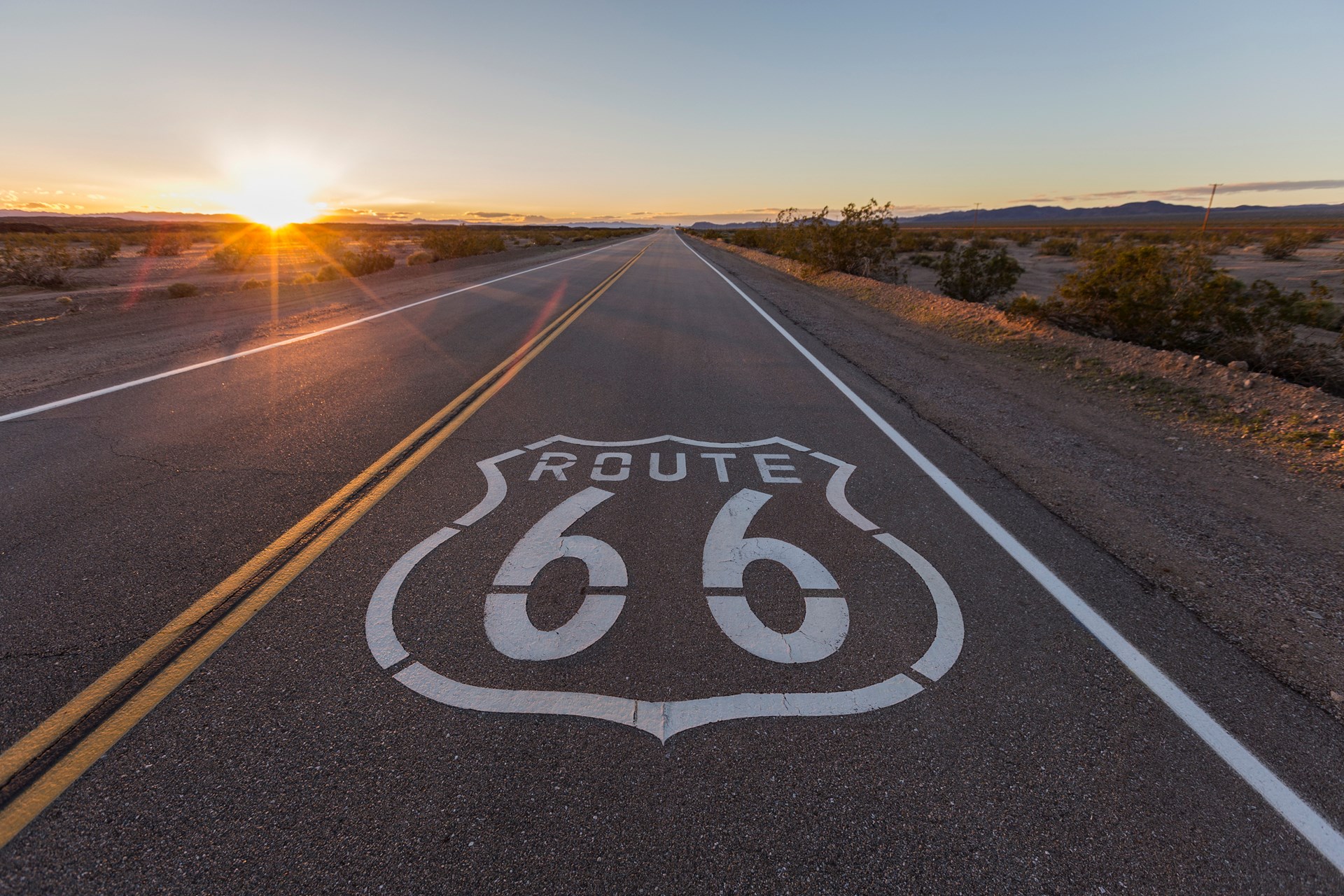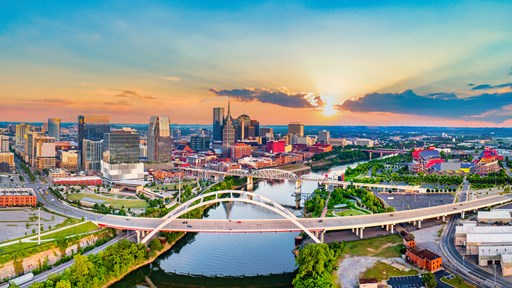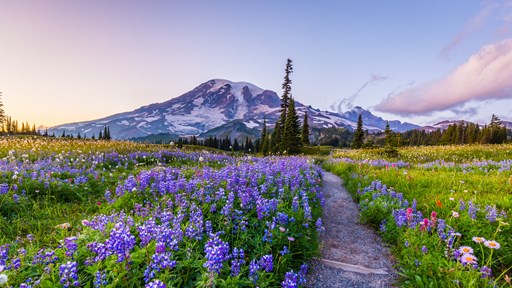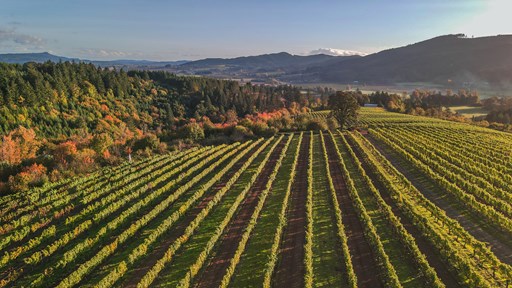In a country where road trips are as quintessential as baseball games, fireworks, and the American dream, the Mother Road reigns supreme. Otherwise known as Route 66, this mighty thoroughfare is an icon of yesteryear — harkening to the heyday of automobiles and the pastime of road travel. Weaving its way from Chicago to Los Angeles, it traverses eight states over the course of 2,448 miles. Far more than a mere roadway or a means to an end, Route 66 was paradigm-shifting when it officially launched in 1926, during a time when the Bureau of Public Roads was rolling out the country’s first Federal highway system.
At the time, Route 66 was mostly a patchwork of existing roads and highways that were linked together, marketed as the most direct and convenient path from the Midwest to the West. Not only was it a boom for transportation and the automotive industry, but it signaled a tidal shift for cities and communities along the way, with businesses, motels, and eateries popping up to meet customer demand all along the Mother Road. In many ways, Route 66 spurred the idea of the “mom and pop” store, as well as the cottage industry of roadside kitsch, from “blue whales” to the world’s second-largest rocking chair. While the pinnacle of America’s scenic routes has long since ebbed, largely replaced by superhighways and air travel, Route 66 remains a beacon of singular Americana, and a rite of passage for a romp through history unlike any other itinerary. From its start in Chicago to its finality in Santa Monica, here is the ultimate guide to Route 66, as well as what to do, where to eat, and where to stay along the way.
The Only Guide You Need for Route 66
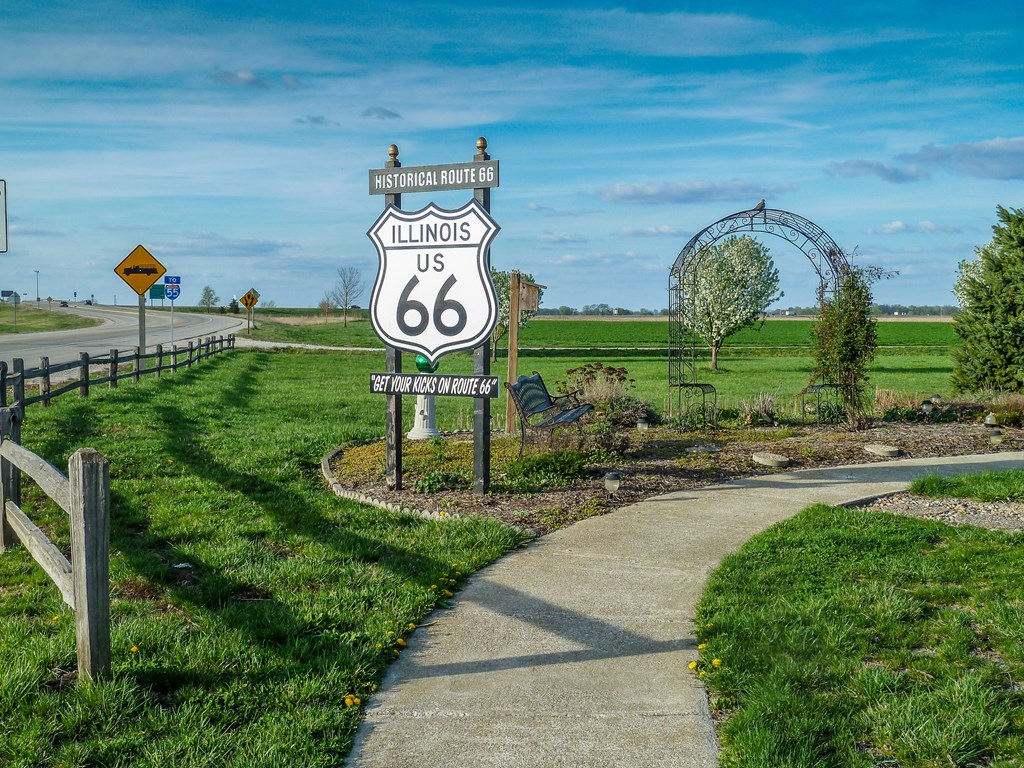
Illinois
The start of Route 66 is marked by a relatively nondescript sign in downtown Chicago, in the Loop. It can be found on Adams Street, christening the beginning of a journey that expands thousands of miles and crosses a multitude of terrains, cities, and communities.
What to do: It’d be all too easy to spend your entire trip milling around Chicago, visiting downtown institutions like the Art Institute of Chicago and embarking on architecture cruises along the river. But you’ve got quite a drive ahead of you, so it’s best to hit the road and get kitschy. Start with the Route 66 Hall of Fame and Museum in Pontiac, which covers all the historical bases of the route and provides a convenient overview of the journey ahead.
Follow this with a stop at President Lincoln’s Home in the state capital of Springfield. The only home he ever owned, and the home he lived in when he was elected President, the property is preserved to maintain its Lincoln-era aesthetic, and ticketed tours are available. Nearby, the Illinois State Capitol building is free and open to the public.
And let’s not forget the mighty Muffler Men, charismatic and colorful statues scattered along the route as promotional emblems for roadside businesses. In Illinois, the three giants are all found in the same state, including Tall Paul in Atlanta, the Gemini Giant in Wilmington, and the Lauterbach Tire Man in Springfield.
Where to eat: Fuel up with a meal at Lou Mitchell’s, an old-school diner nearly as iconic as the route itself. Open since 1923, pre-dating the completion of the Mother Road, it’s among the closest restaurants to the starting point, and the only one that’s remained open for the entirety of the route’s existence. Here, you’ll find good ol’ fashioned diner fare, like hulking omelettes, corned beef hash, and malted waffles. Once you embark, and in case you haven’t gotten your fill of over-the-top diner fare, check out the historic Old Log Cabin in Pontiac or satisfy your sweet tooth at the Twistee Treat Diner — known for its ice cream creations — in Livingston.
Where to stay:
Kankakee South KOA Holiday
Springfield KOA Journey

Missouri
It may have been built as a monument to Westward Expansion in the U.S. during the 19th century, but St. Louis’ Gateway Arch also serves as a gateway into Missouri, as Route 66 weaves into its second state.
What to do: Naturally, the most fitting way to begin your Missouri segment is with a stint at Gateway Arch National Park, an urban site dedicated to the history and lore of the massive 630-foot-tall monument and all that it represents. Visitors can take a tram ride to the top, for sweeping views of the city, the mighty Mississippi River, and Route 66 that crosses through. The Gateway Arch also operates riverboat cruises on 19th-century replica steamboats, which align nicely with the whole Route 66 throwback theme.
Southeast of the Arch, things get kitschy. Stop in Fanning to witness the second-largest rocking chair in the world. It might be runner-up to a larger one in Illinois, but at 42-feet-tall, it’s nothing to scoff at. Then there’s the Meramec Caverns, a subterranean wonderland that’s been open to guests since 1935 — and outlaws like Jesse James are said to have used it as a hideout.
In the town of Cuba, stop and peruse the outdoor art at “Route 66 Mural City.” Described as the outdoor art epicenter of the entire Route, public art is the bread and butter of the small town, and well worth the stop.
Where to eat: Keep it classic with a thick-as-concrete frozen custard from St. Louis institution Ted Drewes, then save savory for second for burgers from Whisler’s Drive-Up in Carthage, or Southern comforts from Missouri Hicks Bar-B-Q in Cuba. Then, go full-circle back to dessert with a slice or two from Rolla’s Slice of Pie, a homey bakery offering classic pies in requisite flavors like apple, sweet potato, and peach.
Where to stay:
St. Louis N.E. / I-270 / Granite City KOA Journey
St. Louis West / Historic Route 66 KOA Holiday
Lebanon / Bennett Spring KOA Holiday
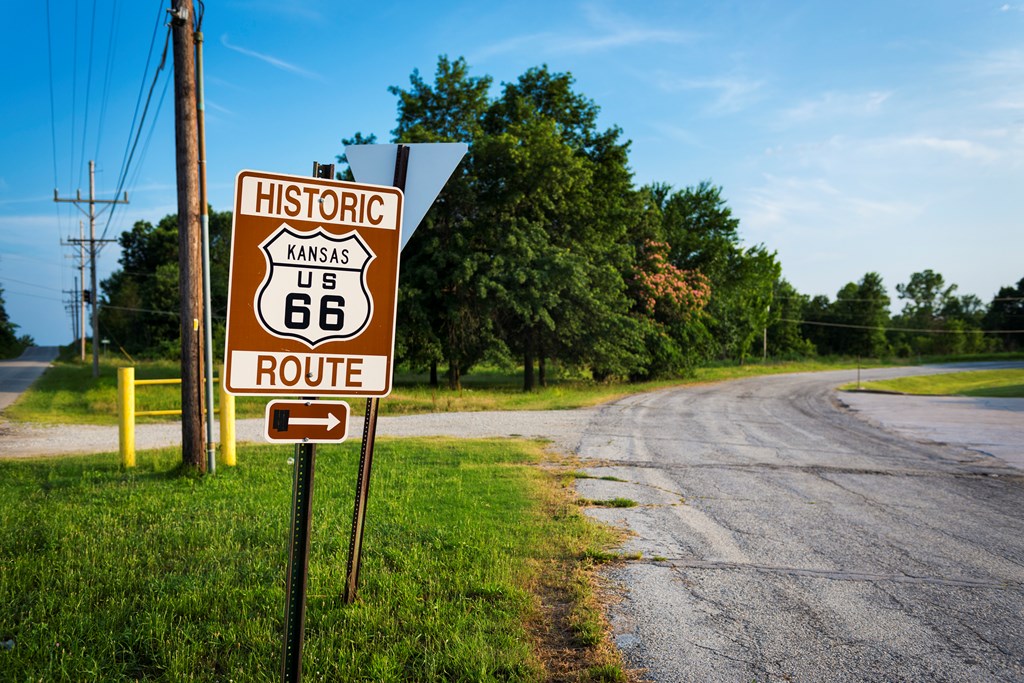
Kansas
Home to the briefest section of Route 66, Kansas only has 12.8 miles of the Mother Road, but the state certainly maximizes the mileage that it has.
What to do: The three towns that Route 66 passes through are Riverton, Baxter Springs, and Galena, the latter of which is the oldest mining town in the state, and contains a gas station that helped inspire the Pixar movie, Cars. The restored Kan-O-Tex Service Station is still a popular spot for photos, complete with a tow truck that served as source material for the Tow Mater character from the movie. Baxter Springs has a timeworn service station of its own, in the Independent Oil and Gas Service Station.
In Riverton, the Old Riverton Store is a classic general store that has stood the test of time. Open for upwards of a century, and now listed on the National Register of Historic Places, the shop is loaded with all sorts of Route 66 souvenirs and trinkets, along with basic groceries and provisions.
Where to eat: The Old Riverton Store also doubles as a cafe and deli, well-known for its chopped ham sandwiches. For a total time warp, the Monarch Pharmacy & Soda Fountain is a real-deal soda shoppe in Baxter Springs, and Red Onion Espressoria is an apt morning go-to for caffeine and a full menu of breakfast plates.
Where to stay:
Joplin KOA Journey
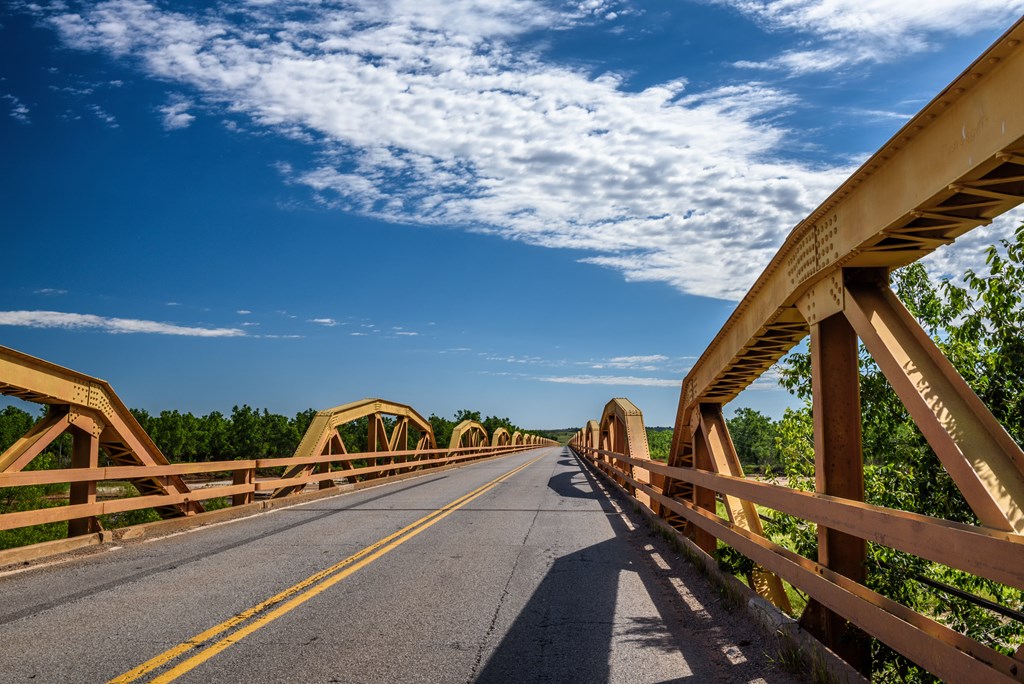
Oklahoma
There are more drivable miles of Route 66 in Oklahoma than any other state, and along said miles, you’ll find a spree of fascinating roadside oddities, destination-worthy restaurants, and iconic Mother Road institutions.
What to do: In northeastern Oklahoma, the Claremore Museum of History is a modest — and free — museum commemorating regional history and famed figures who have called it home. Among them is Lynn Riggs, the playwright behind Green Grow the Lilacs, which became the source material for Oklahoma! Keep driving southwest and you might be surprised to spot a blue whale on the side of the road. That’s the famed Blue Whale of Catoosa, a Route 66 legend that personifies the notion of road trip kitsch. Perched on the edge of a pond, visitors are no longer allowed to swim here, but they are able to walk through the friendly whale’s smiling mouth.
In Tulsa, stretch your legs at the Gathering Place, a vast and whimsical riverside park that contains everything from pond-side beachfront and soaring playgrounds to fire pits, skate parks, and paddle boards. closer to Oklahoma City, the town of Arcadia contains the Arcadia Round Barn — one of the few rounded barns to ever be constructed and preserved — and nearby Pops, a veritable wonderland of quirky soda flavors, complete with a larger-than-life soda bottle out front.
Further west, Oklahoma contains a Route 66 museum of its own — the Oklahoma Route 66 Museum in Clinton. Follow the classic car and neon sign out front, and enter a space dedicated to the splendor of the Mother Road, tracing its history and importance in American automative development.
Where to eat: Mother Road Market is an on-the-nose lunch spot in Tulsa — a lofty food hall with a diverse collection of fast-casual cuisines and Route 66-themed merchandise. In Oklahoma City, it doesn’t get more historic than Cattlemen’s Steakhouse, the longest continuously operated restaurant in the state, located in equally historic Stockyards City. Or keep it casual with a visit to one of three historic burger joints in El Reno, where the Oklahoma-style onion burger was invented in the 1920s.
In terms of modern eats, there’s no shortage of that either. Some top picks include FarmBar in Tulsa, The Jones Assembly in Oklahoma City, and White Dog Hill Restaurant in Clinton.
Where to stay:
Tulsa NE / Will Rogers Downs KOA Journey
Oklahoma City East KOA Holiday
El Reno West KOA Journey
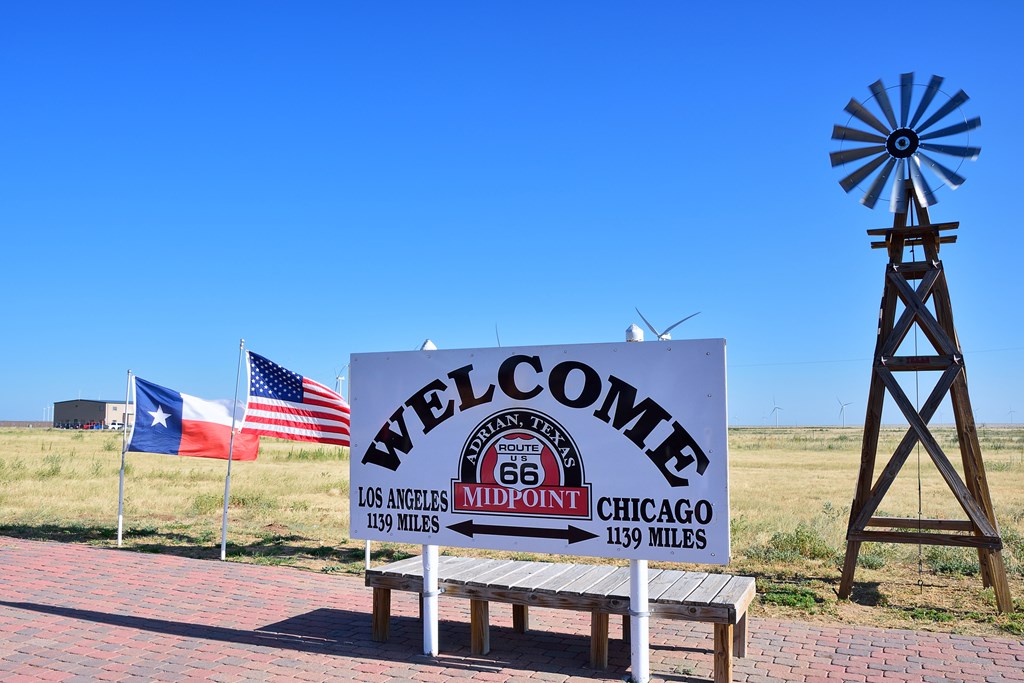
Texas
They say everything is bigger in Texas, but that apparently does not apply to the mileage of Route 66, as there are only about 150 miles that wind their way through the panhandle. But, in true Texas form, what sparse mileage the state contains is made up for in over-the-top steaks and automotive attractions.
What to do: The most iconic Route 66 attraction in Texas, and one of the most famed along the entire route, is Cadillac Ranch. Began in the ‘70s as an art project, Cadillac Ranch is now an Amarillo legend — a lineup of vintage Cadillacs sticking out of the ground off the side of the road, each one splattered in paint.
Beyond Amarillo, the town of Adrian serves as the halfway marker of Route 66, which means there are 1,139 miles behind you, and 1,139 still ahead. Celebrate accordingly with a well-deserved break at the Midpoint Cafe, known for its pies and its gift shop.
Other sites in the state include the Leaning Water Tower in Groom, the wonders of Palo Duro Canyon State Park, and the lesser-known VW Slug Bug Ranch, which is basically a mini version of Cadillac Ranch, but with vintage Volkswagen Beetles in the town of Conway.
Where to eat: The quintessential restaurant standout along Route 66 is The Big Texan, a roadside titan instantly recognizable for its dinosaur-sized steer statue out front. More than a mere restaurant, The Big Texan is a motel complex with colorful buildings and rooms, all fronted by a stadium-sized steakhouse and gift store. It’s in the bi-level steakhouse where brave diners can partake in the 72-oz. Steak Challenge, wherein hungry patrons have one hour to try and consume a 72-oz. steak, with all the fixins, while on a stage in the middle of the dining room. Or, for something a little less gluttonous, try the Cask & Cork, a rooftop restaurant with a huge beer list and reasonable portions of steak, pizza, and other American favorites.
Where to stay:
Amarillo KOA Journey
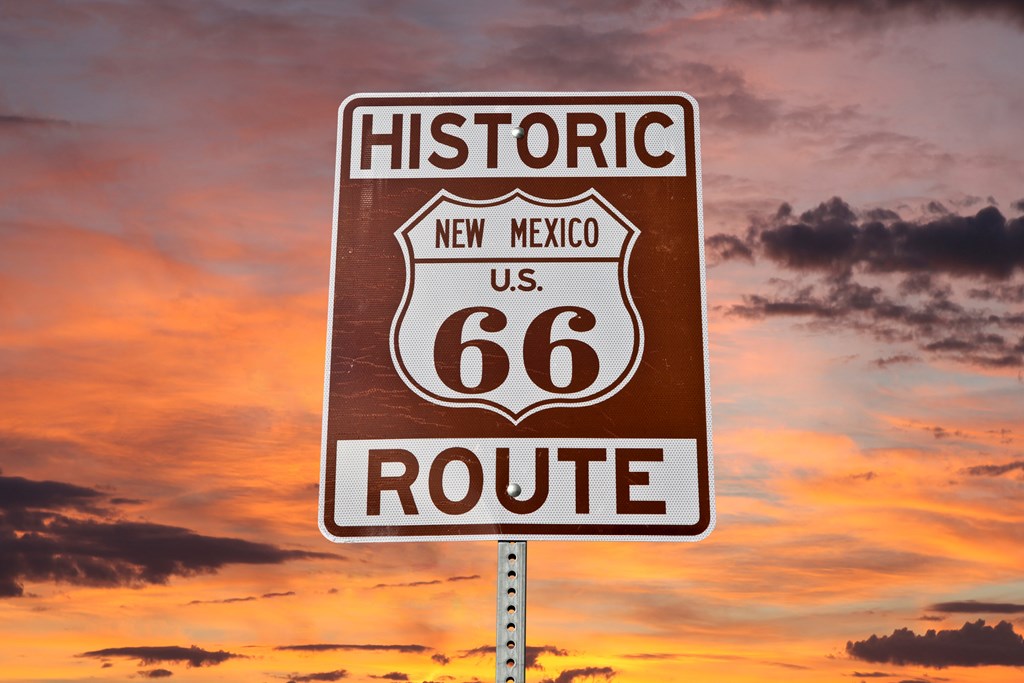
New Mexico
By the time Route 66 passes into New Mexico, it’s a full-blown desert wonderland, as the landscape gets more mountainous, the history extends deeper, and the cuisine lights up with green chiles, blue corn, and endless regional specialties.
What to do: In case you haven’t already consumed enough Route 66 knowledge along the drive, the town of Tucumcari has its very own New Mexico Route 66 Museum & Sculpture, which is worth the pause for its vintage assortment of gas pumps, porcelain signs, and classic cars.
When driving through the desert heat, dive into the Blue Hole for a bit of all-natural refreshment. An 81-foot-deep sinkhole, comprised of crystal-clear blue water, it’s a soothing escape from high temps in the town of Santa Rosa.
One of the only stretches of the route where the road loops back into itself, New Mexico contains parts of Route 66 in both Santa Fe and Albuquerque. The original route looped north of the Sandia Mountains and into Santa Fe, but it was re-aligned in 1937 to instead go directly through Albuquerque. Thus, there’s a walkable portion of downtown Albuquerque, at 4th and Central, where Route 66 literally crosses paths with itself. While here, nearby sites include the iconic KiMo Theater. Or, if you keep it old-school and stick to the Santa Fe route, there’s plenty of history to discover in the downtown historic district, where Santa Fe Plaza is flanked by preserved adobe buildings, turquoise stores, and restaurants slinging breakfast burritos, margaritas, and tacos.
Be sure to park in the town of Gallup for a stroll through Richardson’s Trading Company, family-run since 1913. Buying directly from Native American artists, the huge storefront contains everything from bolo ties and turquoise jewelry to paintings, pottery, belts, and more.
Where to eat: For breakfast and lunch, Albuquerque’s Mary & Tito’s is an award-winning family-owned cafe — in business since 1963 — that spotlights homespun New Mexican recipes via the likes of huevos rancheros, carne adovada enchiladas, stuffed sopapillas, and Mexican wedding cake flecked with walnuts and pineapple. New Mexico’s largest city is also home to some stellar breweries, Native-owned Bow & Arrow Brewing Co. and Ex Novo Brewing Co., the latter of which is an artsy spot in the riverside suburb of Corrales.
Up in Santa Fe, one of the foodiest cities along the entire route, road-trippers will find a plethora of restaurants, cafes, and bars to visit. These include Whoo’s Donuts for blue corn donuts, Dolina Bakery & Cafe for Hungarian-meets-New Mexican fare, and Coyote Cafe & Cantina, a downtown hot spot with a rooftop bar and bracing margaritas.
Where to stay:
Tucumcari / Route 66 KOA Journey
Santa Fe KOA Journey
Albuquerque KOA Journey
Grants KOA Journey

Arizona
Roving through the northern portion of Arizona, Route 66 passes a striking array of topography and terrain. Unlike the soaring saguaro cacti forests down south, this section of the route includes fertile pine forests, snow-capped peaks, and the only national park in the nation that’s fully bisected by the Mother Road.
What to do: Towards the northeastern part of the state, Petrified Forest National Park is among the first main attractions along Route 66. And it’s hard to miss, considering the thoroughfare cuts directly through it. It’s well worth the extra time to pull off and explore, as this underrated national park is rife with distinct history and nature. A far cry from the lush forests that its name suggests, the park preserves boulder-sized petrified logs that date back millions of years — long since crystalized, they shimmer in the sun like precious gems, flickering with hints of purple and green. The park is mostly a drive-thru park, woven with a single easy-to-navigate 28-mile road, and dotted with quick, easy hiking trails by petrified forests and petroglyphs.
Beyond scenic drives and hikes, the wild-west town of Seligman is said to be key inspiration for the town of Radiator Springs in Cars, complete with Angel & Vilma Delgadillo’s Oriignal Route 66 Gift Shop — considered to be one of the most comprehensive shops along the entire Mother Road. In Winslow, a song made famous by The Eagles song “Take It Easy,” travelers can do like the lyrics suggest and literally stand on a corner in Winslow, Arizona. Fittingly, there’s a statue to honor the shoutout.
Perched in the high desert, amidst an endless sea of fragrant ponderosa pines, Flagstaff is the main Arizona city that Route 66 greets. There’s plenty to do in this small city, but some highlights for the region include Walnut Canyon National Monument for breathtaking hikes, the Museum of Northern Arizona for a deeper dive into local history, and scenic, self-guided walking tours of downtown Flagstaff, a preserved district that teems with boutique shops, breweries, galleries, and restaurants.
Another one-of-a-kind is Oatman, a town so sleepy and small that wild donkeys famously roam free in the streets.
Where to eat: Flagstaff is the urban hub for dining and drinking along the route, home to contemporary stunners like Tinderbox Kitchen and Brix wine bar, along with tea-centric Steep Leaf Lounge and Matador Coffee Roasting Company. For more of a classic vibe, Josephine’s is a comfy American bistro located in a historic house, where the bill of fare offers an eclectic mix of Korean beef lettuce wraps, baklava baked Brie, and Southwestern crab cakes with avocado tomatillo sauce.
Beyond Flagstaff, old-school diners are the king of edible kitsch in Arizona, like Goldie’s Route 66 Diner in Williams, Mr. D’z in Kingman, and the ominously named Roadkill Cafe in Seligman.
Where to stay:
Holbrook / Petrified Forest KOA Journey
Flagstaff KOA Holiday
Seligman / Route 66 KOA Journey
Kingman KOA Journey
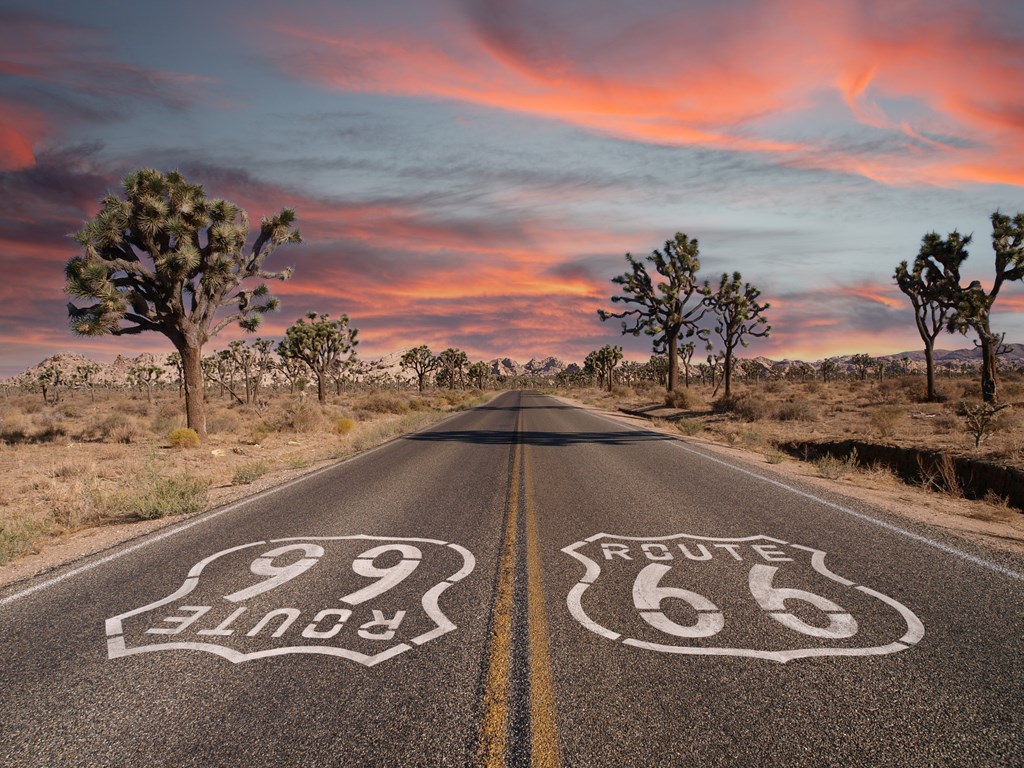
California
The final stretch of Route 66 meanders through the deserts, mountains, and Joshua trees of southern California, before culminating with panoramic Pacific views in Santa Monica.
What to do: Here, you can squeeze in one last Route 66 museum at the California Route 66 Museum in Victorville, see more Cars inspiration at the Wigwam Motel, and even visit the site of the original McDonalds in San Bernardino.
It’s worth the slight detour to hike in Joshua Tree National Park, or save your steps for the Santa Monica Mountains National Recreation Area out by the coast.
At the end of the road, you’ll have to get out of your car and finish on foot if you want to reach the technical end of the route. That’s because Santa Monica Pier, which contains a much-needed Route 66 sign, is not accessible to cars. But it’s well worth it to explore on foot anyway, as the famed pier contains rides, snacks, and beach views for days.
Where to eat: The Los Angeles portion of the route is filled with iconic, enduring eateries, cafes, and familial restaurants. Among them are The Donut Man (most famed for its seasonal strawberry-filled fritters), sandwich-slinging Le Roy’s, Fair Oaks Pharmacy & Soda Fountain in Pasadena, and Cindy’s Coffee Shop. Beyond the big city, look for quieter stopovers and indie diners, like Route 66 Classic Grill in Canyon Country, and the Route 66 Roadhouse & Tavern in Duarte.
Where to stay:
Needles KOA Journey
Palm Springs / Joshua Tree KOA Holiday
Barstow / Calico KOA Holiday
 Born and raised in New Hampshire, Matt Kirouac grew up with a love for camping and the outdoors. Though he’s lived in Chicago since 2006, he’s always on the lookout for new adventures. He writes about travel and food for outlets like TripExpert, Money Inc, Upventur, DiningOut, Food Fanatics magazine, Plate Magazine and Zagat, and he currently serves as Chicago editor for What Should We Do?! He’s the author of The Hunt Guides: Chicago (2016) and Unique Eats & Eateries of Chicago (2017).
Born and raised in New Hampshire, Matt Kirouac grew up with a love for camping and the outdoors. Though he’s lived in Chicago since 2006, he’s always on the lookout for new adventures. He writes about travel and food for outlets like TripExpert, Money Inc, Upventur, DiningOut, Food Fanatics magazine, Plate Magazine and Zagat, and he currently serves as Chicago editor for What Should We Do?! He’s the author of The Hunt Guides: Chicago (2016) and Unique Eats & Eateries of Chicago (2017).


















